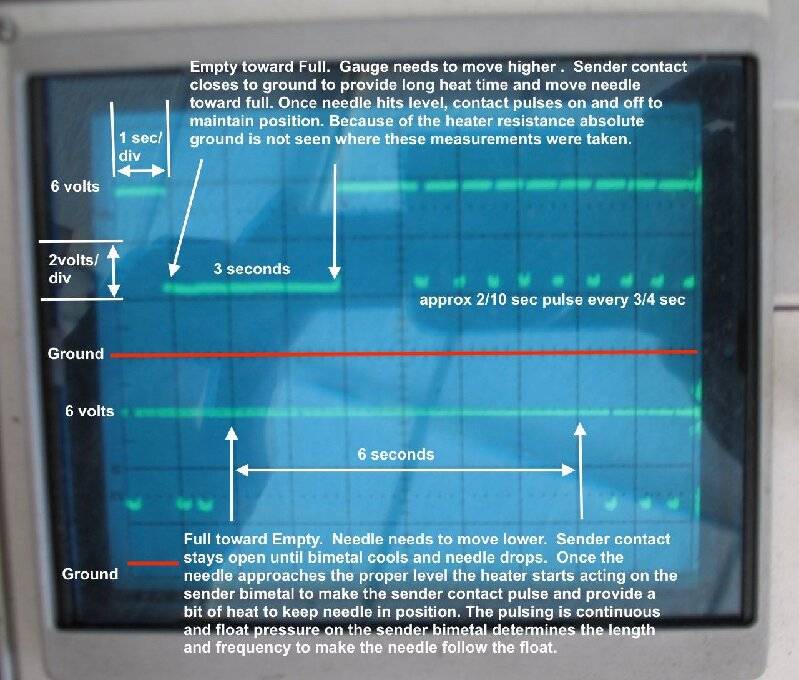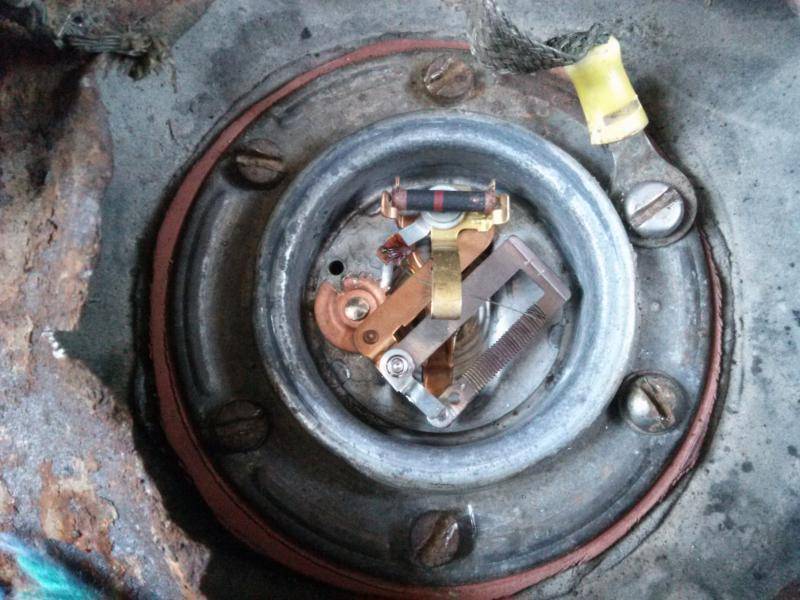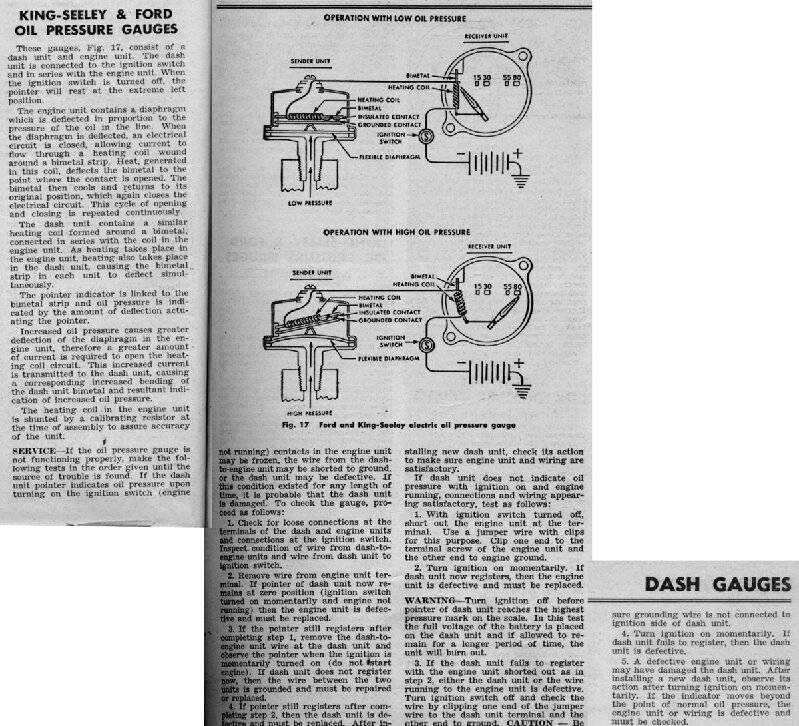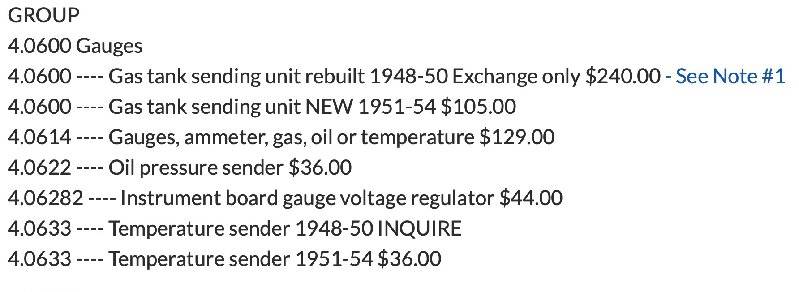|
Re: Oil Pressure Gauge
|
||||
|---|---|---|---|---|
|
Forum Ambassador
|
I don't know what the solution is for this issue. 48-50 gauges use a different type operating principle and sender than all other year Packards. The senders found today are resistance types and do not operate the same. BDeB mentioned that some Fords of the era used the same type gauges and some of their senders will be compatible but we don't have any years to try and find. Because the senders are so different, unless they have enough volume to reproduce them the Ford senders are probably getting scarce too. As to the NOS item, it is hard to say what is going on there. Several have found some NOS items have oxidized and poorly functioning contacts just from sitting on a shelf. About the only way Packard documented to actually test the gauge is to use a known good fuel sender. That procedure is in SC Vol 22 #3
All other year gauges used a straight changing resistance sender for gas, temp and oil. 48-50 models have a heater which operates a bimetal strip in the senders. The bimetal only opens and closes a contact to ground which operates another heater in the gauge. How often and how long the sender connects to ground is determined by the action of changing pressure of whatever is being measured acting on a diaphragm in the sender which changes how much effort or time the heater needs to exert against the bimetal. Somehow the two heaters -- probably by using a heater wire that senses and changes resistance with temperature -- know what the state of the other heater is and can stay in sync. A few who have tried a straight resistance sender seem to have the same issue you have with erratic and incorrect readings. That is probably due to the contact never opening so no off time and no intermittent cooling periods in the gauge heater. Here is a bit showing electrically what happens along with an explanation from a Motors Manual on how the 22-23 series gauges work. The electrical action is the same for all 22-23 senders but the way the coolant, oil, or fuel works the diaphragm pushing against the bimetal is the big difference in the senders. Attach file:  22-23 bimetal sender action.jpg (150.07 KB) 22-23 bimetal sender action.jpg (150.07 KB)  48-50 gas sender.jpg (73.54 KB) 48-50 gas sender.jpg (73.54 KB)  bimetaloil1.jpg (182.85 KB) bimetaloil1.jpg (182.85 KB)  fuel1.jpg (113.20 KB) fuel1.jpg (113.20 KB)
Posted on: 2023/8/3 13:57
|
|||
|
Howard
|
||||
|
||||
|
Re: Oil Pressure Gauge
|
||||
|---|---|---|---|---|
|
Quite a regular

|
So, in essence I will just have to get used to seeing 0-20lb on my gauge and I will just have to manually test every year when doing my oil change just to verify all is good. Thanks for the good info. At least I am not going to go crazy thinking I missed something! LOL!!
Posted on: 2023/8/3 14:59
|
|||
|
||||
|
Re: Oil Pressure Gauge
|
||||
|---|---|---|---|---|
|
Forum Ambassador
|
You might inquire at Kanter and see if the listing on their Packard parts site is correct or a misprint. If they actually have found a replacement for the 48-50 models that would be terrific but with the low price I kind of think that is for the 51-4 oil light sender only.
The oil light sender used in 51-4 is easy to come by but all the 48-50 senders are another story as evidenced by the exchange price on fuel or inquire on temp notes. Unless they have sourced the Ford item BDeB mentioned or found a suitable modern replacement I suspect an error but would be nice to know for sure.
Posted on: 2023/8/3 15:39
|
|||
|
Howard
|
||||
|
||||
|
Re: Oil Pressure Gauge
|
||||
|---|---|---|---|---|
|
Home away from home
|
If anyone knows of an electronic oil transducer that would work with positive ground, turning that signal into a rectangle wave can be done probably with a 555 timer circuit.
Posted on: 2023/8/4 9:17
|
|||
|
1955 400 | Registry | Project Blog
1955 Clipper Deluxe | Registry | Project Blog 1955 Clipper Super Panama | Registry Email (Parts/service inquiries only, please. Post all questions on the forum.) service@ultramatic.info |
||||
|
||||









